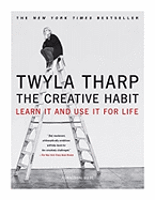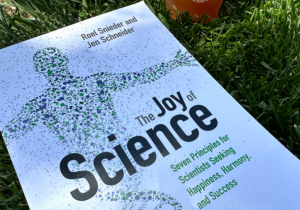Why You Should Read The Creative Habit
 So you’re not a dancer. You’re not a musician. You’re not an artist or a poet. Why read this book? Because you have ideas: ideas for new population studies, new treatments for disease, and new ways to look at data. And this book will give you the habits that beget more good ideas and allow you to take advantage of them when they show up. For creativity, as choreographer and author Twyla Tharp stresses, is not an inborn characteristic nor merely the odd bolt of inspiration; it is a collection of patterns and practices that allow anyone to create—as long as they’re willing to put in the work.
So you’re not a dancer. You’re not a musician. You’re not an artist or a poet. Why read this book? Because you have ideas: ideas for new population studies, new treatments for disease, and new ways to look at data. And this book will give you the habits that beget more good ideas and allow you to take advantage of them when they show up. For creativity, as choreographer and author Twyla Tharp stresses, is not an inborn characteristic nor merely the odd bolt of inspiration; it is a collection of patterns and practices that allow anyone to create—as long as they’re willing to put in the work.
Tharp begins by describing how she has aligned her own life to foster creativity, because “[e]verything is usable….But without proper preparation, I cannot see it, retain it, and use it. Without the time and effort invested in getting ready to create, you can be hit by the thunderbolt and it’ll just leave you stunned.” She knows her own “creative DNA” (there’s a questionnaire included for you to discover yours), creates and hews to rituals to make beginning a project automatic rather than scary, and daydreams creatively (see p. 30 for a primer on how). Included in proper preparation is mastery of the fundamentals of one’s art—the basic barre work for a ballerina, grammar and diction for a writer—through “perfect practice,” and a lot of it. (Tharp doesn’t let anyone off easy.)
She then arranges the rest of the chapters as a journey through her creative process, from how she “scratches” for inspiration, to how she determines the “vital…difference between good planning and too much planning,” to how she benefits from both resources and limits. If you’ve ever had to figure out a novel method of running an experiment because the money just wasn’t there to do it any other way, you know what she’s talking about.
She ends each chapter with several helpful and unusual “exercises” built around the same theme: getting out of a rut, or determining the critical “spine” of your work.
Perhaps because of her dance background, Tharp’s advice is rich with visual metaphor, such as her description of planning as scaffolding around a construction site that goes away as the building rises above the ground. This background of course gives rise to many exercises and habits grounded in physical movement, but they aren’t just for dancers; anyone can do “Egg” (112) or “Do A Verb” (203). They are, as she writes, “exercise[s] that teach…you how to accomplish the most difficult task in any creative endeavor: begin.”
So if you’re finding it hard to sit down and write that manuscript, or turn that great idea into a workable study, take a look at this book, and get into the habits of creativity.






0 Comments